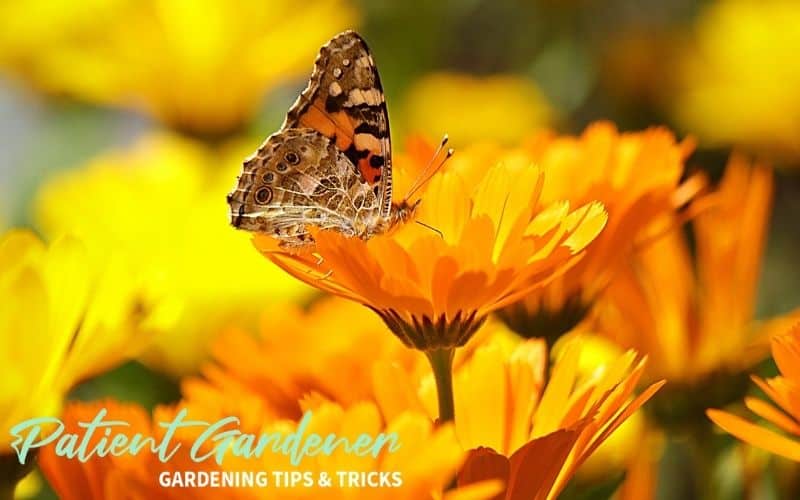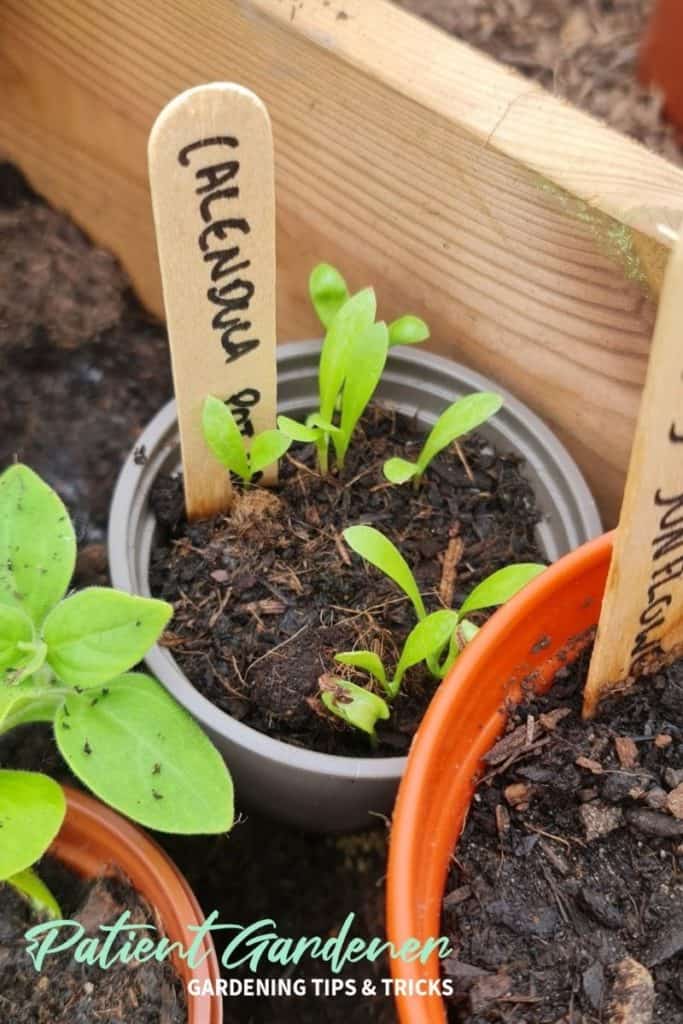How Far Apart To Plant Calendula
If you are just moving some young Calendula plants into your garden then you are probably wondering how far apart you should plant Calendula. Let me help you out with this handy guide.

What space to leave between Calendula plants
Calendula is not a fussy plant and can deal with many different conditions and also different spacing.
They can also be grown easily in rows on the allotment either as a herb or for cut flowers.
If growing in rows they can be grown as close as 15cm apart.
In a border
Calendulas also do really well in a traditional border. they aren’t afraid of having other plants around them and can adapt and thrive in this competitive environment.
How big do Calendula grow?
Typically a Calendula can reach a height of 60cm with a spread of up to 60cm. There is a variance depending on the variety grown with some types growing larger than this.
Some gardeners also pinch out the growing tip of young calendulas. This promotes bushier growth rather than height.
You can find out more about this in my how tall do calendula get article.
Calendula Officinalis (pot marigold)
Calendula is an annual herb that is edible and is commonly used in herbal remedies for all kinds of afflictions.
While being an annual it does have a strong self-seeding habit so grows almost as if it was a perennial. Plant some in a garden bed and expect them to readily self-seed and come back year after year.
They are really easy to grow and not too fussy at all. Provide them with a nice sunny spot in good, well-draining soil and they will reward you with ample bright orange blooms.

How to Grow Calendula
Calendula can be easily started from seed. Like all annual flowers (technically Calendula are a herb but they are normally grown as flowers), you want to start them early if possible to get the best summer displays.
Sow a few seeds per pot in early spring in a sheltered spot. A greenhouse or sunny windowsill is ideal.

They are good germinators and not overly fussy, just plant them under a thin layer of compost. You can use seed compost or just general purpose compost to sow Calendula.
As with most small seeds I find it better to water the soil to get it nice and moist before planting the seeds so you do not risk moving them with a deluge of water.
Once the seedlings have developed a good set of leaves I will tip them out from the pot and start separating them. The aim is to break the soil apart softly and keep as much of the root of each seedling as intact as possible.
You can then pot them on into individual pots or a couple of seedlings per pot if you are running short!

I will then grow them on in pots until all risk of frost has passed. At this time they can be planted out in the garden.
If you have grown your Calendula in a heated area, such as a heated greenhouse or inside your home then you will need to gradually acclimatise them to outside life before planting out.
Benifits of Calendula
Calendula is edible and was commonly known as poor man’s saffron. This is because they can be used to colour food dishes in much the same way as saffron is, although they do not taste like saffron. The flower petals can be added to salads for a splash of colour.
Beyond being edible calendula flowers have been used for many hundreds of years as a herbal remedy.
It has antibacterial, antifungal and antiseptic properties and is used in all sorts of things from topical creams to lip balms.
What is Calendula’s common name?
Calendula are known as pot marigolds. Despite this, they are not marigolds but the name stems from them looking very similar to marigolds and either commonly being used in pot cooked food dishes or the fact that they grow well in pots, depending on who you ask.







